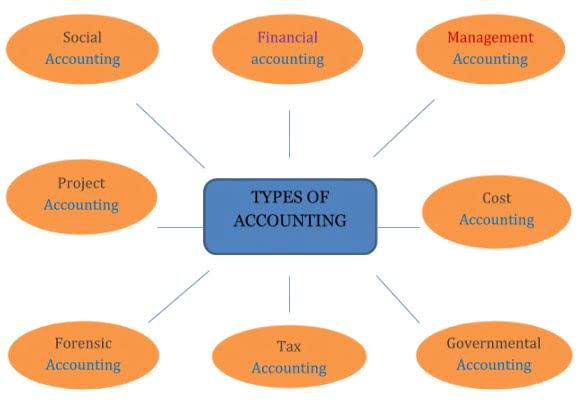4 2 Determining the useful life and salvage value of an asset

Understanding salvage value is essential for businesses as it influences asset depreciation, impacting financial statements and tax obligations. This concept helps companies plan for the end of an asset’s useful life by estimating salvage value its residual worth, aiding in asset management and disposal decisions. Used for machinery and equipment, this method calculates depreciation based on usage instead of time. Salvage value is considered when determining the total depreciable cost, ensuring businesses don’t overestimate depreciation expenses. In the straight-line method, salvage value is deducted from the purchase price before dividing by useful life, ensuring depreciation is spread evenly.
How depreciation affects salvage value

For example, suppose a company sells a machine for $20,000 at the end of its useful life, and the book value of the machine is $10,000. If the company’s ordinary income tax rate is 30% and the capital gains tax rate is 15%, the company may have to pay $3,000 or $1,500 in taxes on the gain, respectively. If the company’s ordinary income tax rate is 30%, the company may save $1,500 in taxes from the loss. As the name suggests, the salvage value of assets refers to their final value after they have depreciated over time. Also known as scrap value or residual value, it’s important for businesses to calculate the value to find the selling price of old assets. Some methods make the item lose more value at the start (accelerated methods), like declining balance, double-declining balance, and sum-of-the-years-digits.
What is the difference between salvage value and residual value?
Different depreciation methods treat salvage value differently, which affects financial reporting. The calculation of salvage value is a crucial aspect of asset management and financial planning, particularly in businesses where assets depreciate over time. The salvage value is the estimated residual value of an asset at the end of its useful life. Understanding this value is essential for accurate depreciation accounting and for making informed decisions about when to retire or replace an asset.
- This often involves dismantling and disposal costs, which can be offset by recycling or repurposing components.
- On the balance sheet, salvage value contributes to an asset’s net book value, impacting a company’s financial position.
- Understanding its importance is essential for finance professionals across different sectors.
- AI also enhances depreciation forecasting by dynamically adjusting schedules based on real-time data, reducing human error and ensuring compliance with accounting standards.
- Different countries and industries follow varying tax rules regarding salvage value.
- If the same crane initially cost the company $50,000, then the total amount depreciated over its useful life is $45,000.
How is Salvage Value Calculated?
It’s essential to consider the life cycle of an asset when deciding whether to ignore depreciation in business computing. Sometimes, a machine’s efficiency level remains intact even after its expected life, allowing it to be used beyond its expected tenure. In many businesses, especially manufacturing, Bookkeeping for Consultants machines are the backbone of production.
Real-World Example of Salvage Value Fraud
Each year, the depreciation expense is $10,000 and four years have passed, so the accumulated depreciation to date is $40,000. The company pays $250,000 for eight commuter vans it will use to deliver goods across town. If the company estimates that the entire fleet would be worthless at the end of its useful life, the salvage value would be $0, and the company would depreciate the full $250,000. Companies can also use comparable data with existing assets they owned, especially if these assets are normally used during the course of business.

- Therefore, the company could expect to sell the computer for $300 after 5 years of use.
- Economic trends, industry demand, and technological advancements influence resale value.
- They will also be able to calculate how long the machine is expected to be useful to a company based on how much the organization is going to use it.
- The company purchased the asset for a total basis of $51,000 and is projected to net $9,000 upon its eventual disposal, resulting in a total cost to the business of $42,000.
- The useful life assumption estimates the number of years an asset is expected to remain productive and generate revenue.
- On the other hand, book value is defined as the value of the asset exactly how it appears on the balance sheet of the company.
Salvage value, also known as residual value or scrap value, is the estimated monetary worth of an asset at the end of its useful life. Technology and SoftwareWith rapid technological advancements, the salvage value of tech assets can be tricky to estimate. Several challenges make payroll it difficult to estimate an asset’s worth at the end of its life cycle. Liquidation value is usually lower than book value but greater than salvage value. The assets continue to have value, but they are sold at a loss because they must be sold quickly. Moving on, let’s look through the details of how the salvage value can be used in depreciation calculations.
Using Salvage Value to Determine Depreciation
It is a crucial factor in determining the total cost of ownership and the depreciation of an asset over time. In this article, we will delve into the concept of salvage value, its calculation, and its significance in asset management. Salvage value affects depreciation, a non-cash expense that influences net income on the income statement.

2.1.3 Intangible assets used in research and development (IPR&D)
Businesses use this concept in various industries, from transportation to manufacturing and real estate. She holds a Bachelor of Science in Finance degree from Bridgewater State University and helps develop content strategies. Once you know the salvage value, you may go ahead to calculate depreciation. In such cases, the insurance company decides if they should write off a damaged car considering it a complete loss, or furnishing an amount required for repairing the damaged parts. So, in such a case, the insurance company finally decides to pay for the salvage value of the vehicle rather than fixing it. This is often the case with low-cost assets such as office supplies or furniture.

